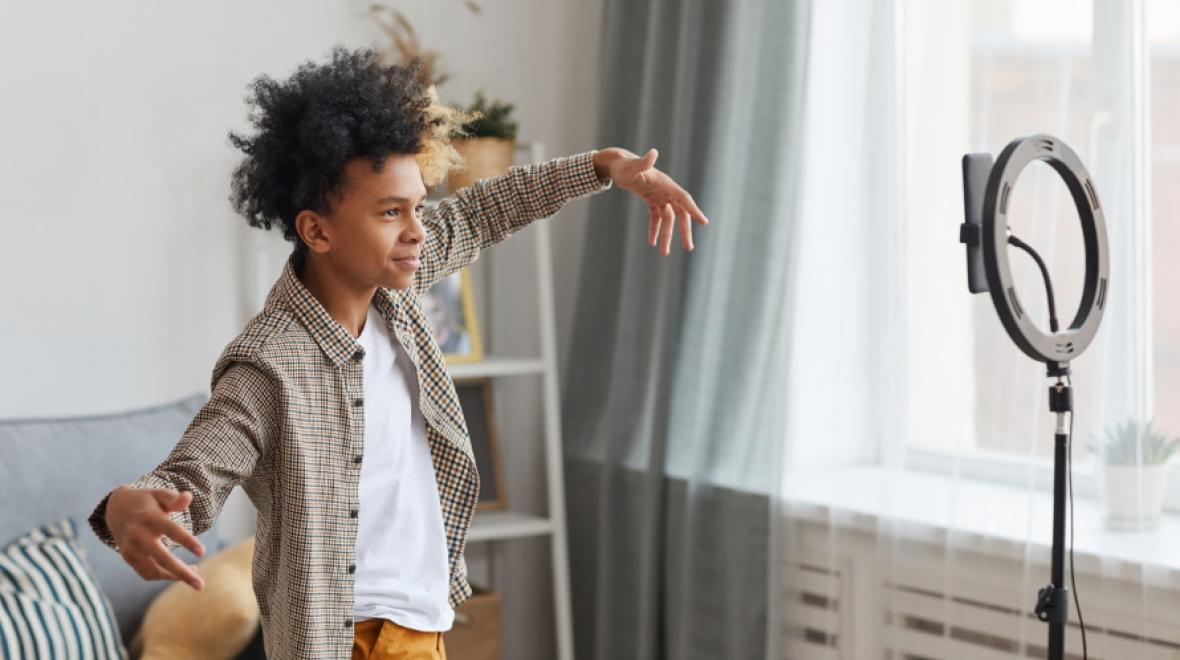
Okay, I’ve got 15 seconds to tell you as much as I can about TikiTok so pay attention because it’s got to be fast, and the most important thing to keep in mind is... time’s up.
Fortunately, this article doesn’t have to fit the TikTok format, which is often limited to 15 seconds.
So what is TikTok? And is it okay for kids? TikTok is a video-sharing social networking platform where users create, browse and swap short video clips. In other words — for the going-gray parent who's still trying to sort out the last generation of social media — it’s like tweeting homemade YouTube videos to your Facebook friends.
The content of TikTok videos generally veers toward comedy, dancing and entertainment.
How to keep your kids safe
There are a few things you should know about how to keep your kids safe on the app. TikTok has set some automatic account limits based on age, and these are a good place to start. Kids under 13 can’t post or comment, and the content they see is curated.
For 14- and 15-year-olds, accounts are private by default, and comments are allowed only by people on their friend list. At age 16, the app unlocks direct messaging and livestreaming, and the full functionality unlocks when a user reaches age 18.
If your kids are younger than 13, you might want to think about only letting them use the app in your presence because there have been reports of kids “stumbling across” less appropriate material — nothing like full-on porn, but some of the music and dancing stuff can get pretty risqué.
Parental controls
As with most social media apps, you should begin with a visit to the parental controls. On TikTok, go to profile, then settings and find "digital wellbeing." Click "restricted mode" to set a passcode. You can limit content and messages, as well as set a time limit on daily use.
You can link your own account (you should create one so you can monitor everything your kid is posting) to your child’s to have direct control over the safety settings. Do this by opening digital wellbeing on both phones and tap "family pairing" to link them with a QR code. Remember, for those of you who may be tech-challenged, like me, there are tons of helpful videos to walk you through all of this.
What are the downsides of this app?
Parental controls are an effective way of addressing stranger danger. But there is another downside to the app — it can expose your kids to a lot of influencer marketing. Much of the content on TikTok is advertising trying to piggyback its way on the fun into your child’s brain.
It’s important to explain to your kids that when their favorite TikToker is raving about their awesome new headphones, the headphone manufacturer is paying them to do so. TikTok likes and followers are commodities that have become big business. Your kids are possibly savvier about this than you think, but it’s good to remind them from time to time that TikTok is a product that is designed to make money.
What's good about TikTok?
After all that pooh-poohing, what is there to say that’s good about TikTok? Well, it’s a lot of fun. Remember the ALS Ice Bucket Challenge? It was kinda great trading those videos and laughing with loved ones. TikTok is a lot like that.
Your kids might lip-sync a duet with their friends, swap memes or even just comment on what they’re all doing. Such shared experiences have become harder to come by of late (because of you-know-what), and it’s nice to have a platform that can link us all together. Plus the LPM ratio is quite high (that’s Laughs Per Minute, which is something I just now made up), and if you’re anything like me, there’s nothing as joyful as hearing your kids laugh.
Mostly, just keep in mind that TikTok is basically another media platform. Lots of fun, but make sure to lump its use in with whatever screen-time limits you’ve set for the family. And of course, make sure they never share their personal information. Kids are pretty aware of the perils of doing so, but it’s up to parents to stay vigilant.
Now if you’ll excuse me, I’ve got 15 seconds to nail this Megan Thee Stallion duet…











